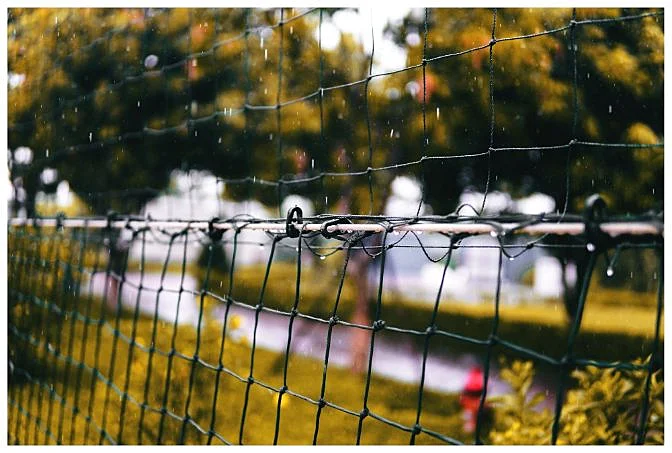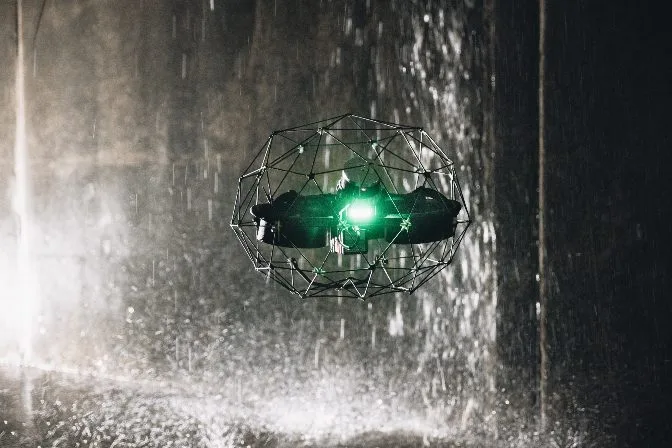What Does a Drone Cage Do? Use Cases, Types & Indoor Inspections
There are three different types of drone cages on the market—read this article to learn about each one.
Drone cages serve two main purposes: they protect people from the drone’s propellers and shield the drone itself from damage during collisions. This makes them essential for safe indoor flights and operations in tight or hazardous environments.
A well-designed drone cage doesn’t just help the drone survive a collision—it can actually allow the drone to keep flying after hitting something. This level of durability is crucial for missions where precision and reliability matter most.
However, not all drone cages are created equal. Some are simple add-ons for commercial drones, while others are specifically engineered for use in confined spaces, where collisions are more frequent. In this article, we’ll explore the different scenarios where drone cages are useful, break down the three main types available, and dive into their most popular applications.
Understanding Drone Cages: What They Are and How They Work
The term "drone cage" can be a bit confusing because it refers to two distinct things. On one hand, it might describe an enclosure used at events like drone races or trade shows, where safety is a priority. These enclosures are typically made of netting or wire mesh, as shown below:

On the other hand, when we refer to a "drone cage" in this article, we’re talking about a structure that is attached directly to the drone, such as the one found on Flyability’s Elios 3:

The Origins of the Drone Cage
While many think of drone cages as a modern innovation, their origin traces back to a real-world crisis. In 2011, after the Fukushima nuclear disaster, there was an urgent need for safer ways to inspect damaged areas without putting humans at risk. That's when Flyability’s co-founders, Patrick Thévoz and Adrien Briod, began developing collision-tolerant drones with built-in cages. The result was the Elios 1, followed by the Elios 2 and Elios 3, which were designed from the ground up to handle collisions safely.
Today, these drones are used in some of the most dangerous and challenging environments, from nuclear power plants to deep mines and collapsed buildings.
Why Use a Drone in Confined Spaces?
The primary reason to use a drone instead of a human in confined spaces is safety. Imagine trying to inspect a damaged nuclear reactor or a collapsed building—without a drone, you'd have to send a person into potentially life-threatening conditions. Drones eliminate that risk, making them ideal for inspections, search and rescue, and even forensic investigations.
Additionally, using a drone can save companies significant time and money. For example, instead of setting up scaffolding for an inspection, a drone can quickly gather high-quality visual data, reducing downtime and costs.
Where Are Drone Cages Used Today?
Drone cages are now used in a wide range of industries and situations. From industrial inspections to disaster response, they enable safe and efficient operations in places where traditional methods would be too risky or impractical.
Here are some common examples:
- Inside nuclear power plants for routine inspections.
- Inside boilers and pressure vessels in the oil and gas industry.
- In mines to assess the condition of excavations.
- Inside burned-out buildings for fire investigations or situational awareness.
- Underground in sewer systems to locate damage in hard-to-reach pipes.
- In water parks to check infrastructure and maintenance conditions.
As drone technology continues to evolve, so do the applications for drone cages. Their ability to protect both people and equipment makes them invaluable in many fields.
The Three Types of Drone Cages
Currently, there are three main types of drone cages available:
- Add-on cages for commercial drones.
- Decoupled cages designed for specific models like the Elios 1.
- Fixed cages built into drones like the Elios 2 and Elios 3.
Each type has its own advantages and limitations, depending on the application.
1. Add-On Drone Cages
Add-on cages are convenient for users who want extra protection for their drones. They attach easily and are often tailored to specific models. However, they are not always ideal for industrial use due to several limitations:
- Not collision tolerant—cages don’t necessarily make a drone crash-proof.
- Lack inspection-specific features like GPS-free navigation or specialized lighting.
- Can reduce flight time by up to 50% due to added weight.
- May require disabling obstacle detection systems, which is not ideal in tight spaces.
These cages are best suited for recreational or light-use scenarios rather than demanding industrial tasks.
2. Decoupled Drone Cages
Flyability’s Elios 1 uses a decoupled cage design, allowing the drone to remain stable even after collisions. The cage is separated from the drone on three axes, enabling it to absorb impacts without affecting flight stability. This design is particularly useful in tight or unpredictable environments.
One benefit of the Elios 1 is its modular construction, which allows for easy repairs and upgrades. However, the cage may appear in images, which could be a minor drawback for certain applications.
3. Fixed Drone Cages
The Elios 2 and Elios 3 feature fixed cages, which are the most advanced design available today. Unlike add-on cages, these drones are engineered to withstand collisions from the start. They also include advanced features like GPS-free stabilization, LiDAR mapping, and high-definition live streaming, making them ideal for professional inspections and complex missions.
With their collision-resilient algorithms and durable design, these drones can operate safely in environments where other drones would struggle or fail.
Lathe Machining,Cnc Lathe For Sale,Cnc Lathe Machine,Cnc Turning
Ningbo Leyan Machinery Technology Co., Ltd , https://www.cncleyan.com
